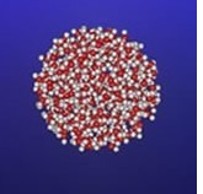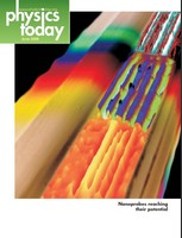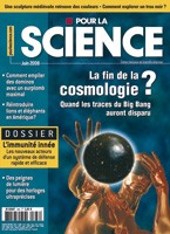- Index
- >Research
- >Team Samson
- >Molecular Interactions in Dilute and Dense Media
Molecular Interactions in Dilute and Dense Media
(M. Chrysos, F. Rachet)
 Our research is structured around two complementary approaches: on the one hand, atomic-scale simulations of dense media, such as supercooled liquids, glasses, or polymers; on the other hand, the study of processes induced by interactions between molecules or atoms in a dilute medium, such as a nonpolar gas. Our work addresses both the understanding of fundamental, yet unexplained, processes and potential applications related to transport properties or environmental concerns. Our expertise spans both experimental and theoretical aspects.
Our research is structured around two complementary approaches: on the one hand, atomic-scale simulations of dense media, such as supercooled liquids, glasses, or polymers; on the other hand, the study of processes induced by interactions between molecules or atoms in a dilute medium, such as a nonpolar gas. Our work addresses both the understanding of fundamental, yet unexplained, processes and potential applications related to transport properties or environmental concerns. Our expertise spans both experimental and theoretical aspects.
In the context of dense matter simulations, we have identified cooperative mechanisms that are particularly pronounced in supercooled liquids—for instance, the dramatic increase in viscosity as the liquid temperature decreases. These behaviors, whose underlying mechanisms remain elusive, are not associated with any structural modification of the medium. However, they appear to be universal features, characterizing supercooled liquids, polymers, and glasses alike.
More recently, we have demonstrated that some of these behaviors are also present in soft matter, suggesting an even broader universality. One hypothesis put forward to explain these phenomena is the spontaneous emergence of cooperative molecular motions in such systems. Among our most notable recent findings is that confining certain materials—such as supercooled water—within nanoporous media (see adjacent figure) unexpectedly enhances the degree of cooperativity. Our research has natural applications in the medical field, notably in the preservation of biological samples or pharmaceuticals.
 Concerning dilute media, we investigate molecular interactions in gases using light scattering techniques. Experimentally, we operate a Raman scattering setup of unparalleled sensitivity, capable of detecting optical signals as faint as a few photons per week—the equivalent of the light received from a candle on the Moon. On the theoretical side, we are developing novel approaches, including quantum-based methods, to study spectra induced by Raman scattering or infrared absorption. In both Raman and collision-induced absorption, the processes directly involve interactions between gas-phase particles. Due to their highly collective nature and the extremely weak signals they produce, these interactions present significant challenges for both experimental detection and theoretical modeling.
Concerning dilute media, we investigate molecular interactions in gases using light scattering techniques. Experimentally, we operate a Raman scattering setup of unparalleled sensitivity, capable of detecting optical signals as faint as a few photons per week—the equivalent of the light received from a candle on the Moon. On the theoretical side, we are developing novel approaches, including quantum-based methods, to study spectra induced by Raman scattering or infrared absorption. In both Raman and collision-induced absorption, the processes directly involve interactions between gas-phase particles. Due to their highly collective nature and the extremely weak signals they produce, these interactions present significant challenges for both experimental detection and theoretical modeling.
 The role of such interactions in phenomena as crucial as the greenhouse effect in terrestrial and planetary atmospheres is far from negligible. This is particularly true for greenhouse gases such as carbon dioxide and methane. As our recent results have shown, vibrational modes that are infrared-inactive in isolated molecules can contribute significantly to the absorption spectra of these gases, due to pairwise molecular interactions.
The role of such interactions in phenomena as crucial as the greenhouse effect in terrestrial and planetary atmospheres is far from negligible. This is particularly true for greenhouse gases such as carbon dioxide and methane. As our recent results have shown, vibrational modes that are infrared-inactive in isolated molecules can contribute significantly to the absorption spectra of these gases, due to pairwise molecular interactions.
The renewal we have brought to the field has received substantial attention in both national and international media (see Physics Today, Vol. 61, No. 6, pp. 20–21, June 2008, or Pour la Science, No. 368, June 2008, figure opposite). These studies have highlighted previously misunderstood and underestimated processes, especially in hot, CO₂- or CH₄-rich planetary atmospheres. More recently, we have observed and analyzed spectral bands arising from so-called double vibrational transitions—a cutting-edge topic that challenges both experimental and theoretical methods. These signals are significantly weaker than those resulting from standard collisional processes, as they stem from two simultaneous transitions occurring in both interacting molecules. Such unstructured bands are suspected to play a role in atmospheric processes involving mixtures of greenhouse gases and nominally inert molecules.
See more:
M. Chrysos, F. Rachet, N.I. Egorova, A.P. Kouzov, “Intermolecular Raman spectroscopy long-range interactions: the CO2-Ar collision-induced n3 CO2 band“, Phys. Rev. A 75, 012707 (2007).
M. Chrysos, A.P. Kouzov, N.I. Egorova, F. Rachet, “Exact low order classical moments in collision induced bands by linear rotors: CO2-CO2 “, Phys. Rev. Lett. 100, 133007 (2008).
M. Chrysos, S. Dixneuf, F. Rachet “Anisotropic collision-induced Raman scattering by Ne-Ne: Evidence for a nonsmooth spectral wing“, Phys. Rev. A 80, 054701 (2009).
S. Dixneuf, M. Chrysos, F. Rachet, “Isotropic and anisotropic collision-induced Raman scattering by monoatomic gas mixtures: Ne-Ar“, Phys. Rev. A 80, 022703 (2009).
S. Dixneuf, M. Chrysos, F. Rachet, “Anisotropic collision-induced Raman scattering by the Kr:Xe gas mixture“, J. Chem. Phys. 131, 074304 (2009).
I.A. Verzhbitskiy, M. Chrysos, F. Rachet, A. Kouzov, “Evidence for double incoherent Raman scattering in binary gas mixtures: SF6-N2 “, Phys. Rev. A 81, 012702 (2010).
M. Chrysos et I. A. Verzhbitskiy, “Evidence for an isotropic signature in double vibrational collision-induced Raman scattering: A point-polarizable molecule model“, Phys. Rev. A 81, 042705 (2010).


